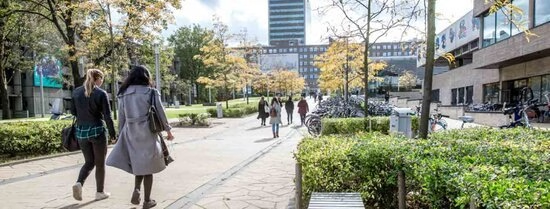Prevention, too, is not about words but deeds, stresses Bram Wouterse, associate professor at Erasmus School of Health Policy & Management (ESHPM). In this contribution, he elaborates on the importance of prevention in healthcare.
If you are a civil servant, it rarely happens that you get quoted in the newspaper. Especially not by one of the best writers on economics in the Netherlands, Frank Kalshoven. Yet this happened to me in 2015 (Een dure denkfout in de gezondheidszorg, de Volkskrant, 2 mei 2015). At the time, I was working as a researcher at the Netherlands Bureau for Economic Policy Analysis (CPB) and had participated in the project Charting Health Care Choices (Zorgkeuzes in Kaart). This is an important study in which political parties can have the effects of their healthcare plans calculated in order to be better prepared for the elections.
I worked on the chapter on prevention. Not much had come out of this part. To still come up with some sort of satisfactory result, I had written down beautiful sentences about the many links in the chain of benefits of prevention, about the benefits of prevention that are often found outside of health care and about the challenges of quantifying all of that. Those very sentences were quoted by Kalshoven ... only to completely tear them down. In short, his message was: start behaving as economists instead of accountants and just start calculating what really matters, the broader societal benefits of good health.
Often lacked a solid rationale
Secretly, I agreed with the criticism. We had tried to do provide insights into the benefits of good health, but that turned out to be quite a heck of a job. Most plans for prevention provided by the political parties were rather vague and often lacked a solid rationale. The main problem, however, was that the design of the study focused on short-term effects on the government budget. Which was totally inappropriate for prevention. Prevention is in an investment, mostly costing the government money in the short term. Even in the longer term, it is questionable whether prevention leads to less healthcare spending. After all, better health leads to a longer life, at the end of which expensive (elderly) care is often needed. As epidemiologist Luc Bonneux puts it in his characteristic way: burying is cheaper than caring.
Prevention interventions at 1-0 disadvantage
So, when we try to find the benefits of prevention we must look elsewhere. First and foremost, the effects on health. After all, that is what prevention is all about. The societal value of good health is high: studies that estimate society's willingness to pay for health generally find a number of 50,000 euros or more per additional healthy year of life.
Within healthcare, decisions on reimbursing new drugs routinely include this value of health gains. The question answered there is whether a new drug is cost-effective; do the additional healthcare costs outweigh the additional health benefits? However, regarding investments in prevention, which are mostly done outside of health care, the bookkeeper's view is mainly used: is this investment saving health care costs? This completely disregards the health benefits associated with prevention and immediately puts prevention interventions at 1-0 disadvantage compared to medical interventions.
Prevention has other benefits apart from health benefits as well. For example, higher labor participation, less absenteeism and higher productivity. Furthermore, there is much social welfare to be gained by using part of the years of life gained after retirement age for volunteer work and informal care. However, these kinds of benefits too often remain out of sight in policy discussions. This is partly due to the lack of a generally accepted model to calculate the economic effects of health policies.
The importance of prevention is much more broadly recognized
Has anything changed since 2015? Yes and no. The importance of prevention, as well as the structural mapping of social benefits, is much more broadly recognized now a days. Various societal parties, including the Socio-Economic Council, have called on the government to start working on structurally mapping the economic effects of prevention. The House of Representatives also recently passed a motion to the same effect. At the same time, a good model to calculate the economic effects of prevention is still lacking. Therefore, it is of no coincidence that the chapter written on prevention in 2020 in the second edition of Charting Health Care Choices ultimately came of almost as dissatisfactory as the first one.
There is a clear task here, in the first place for knowledge institutes such as the National Institute for Public Health and the Environment (RIVM) and CPB. Only they have the models, expertise, and, above all, the authority to make statements about the effects of health policy. However, universities could also play a larger role. For example, within Smarter Choices for Better Health we have a unique combination of expertise on prevention, inequality and economic evaluations.
If we really want all our knowledge to lead to a better and more effective health policy, we need to be more willing than we are now to move away from randomized studies with their precisely identified causal effects, and dare to get involved in the murky waters of policy advice. As Frank Kalshoven said in 2015: let's stop procrastinating and just get to work to calculate the social benefits of prevention.
- Associate professor
- More information
Dr Bram Wouterse is co-lead of the Equity line of Smarter Choices for Better Health. This Erasmus Initiative is committed to long-term multidisciplinary research for better health through smarter choices. Read more about this Initiative.
- Related content

